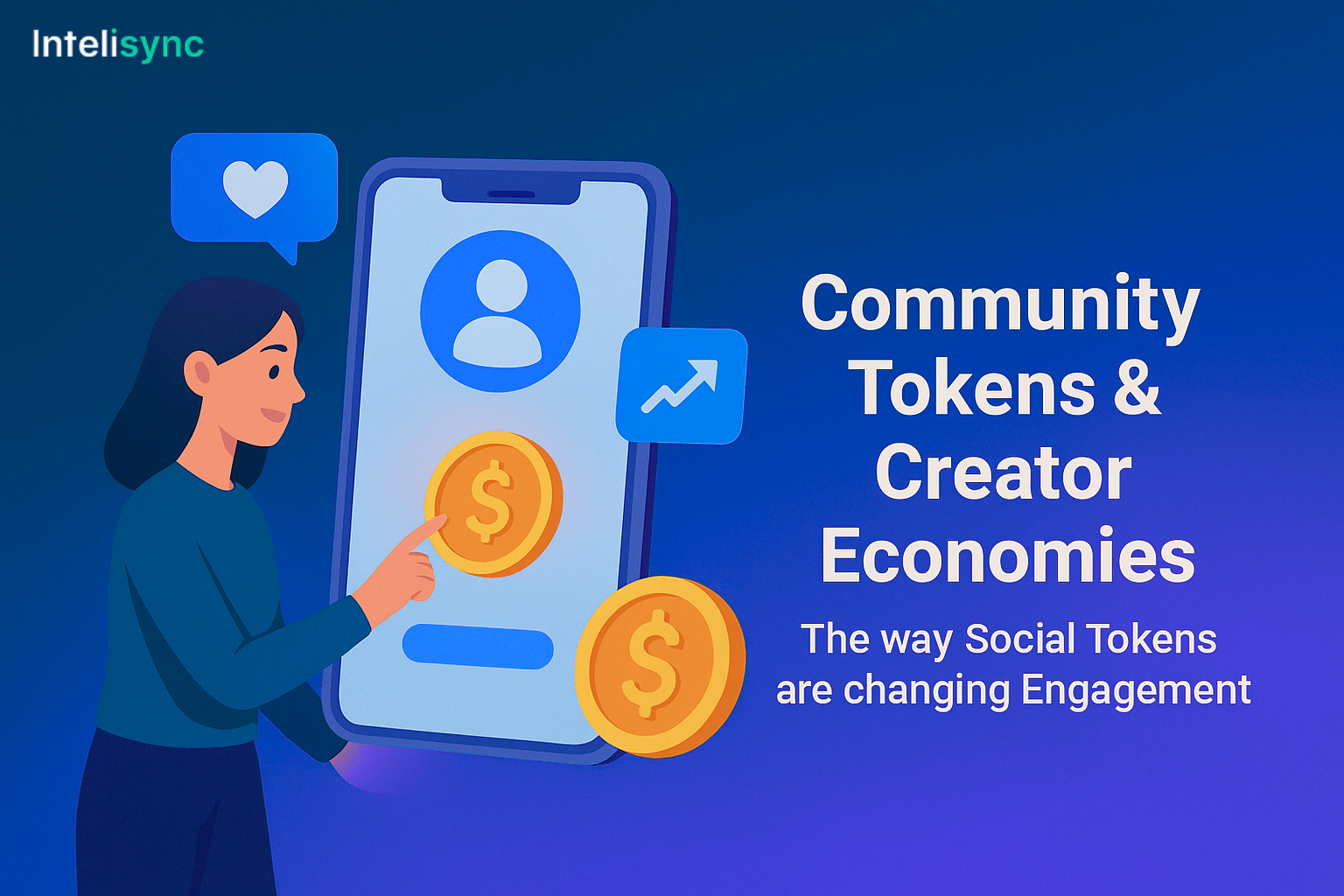The crypto marketplace is still emerging, and many users do not fully understand the details behind blockchain technology. Influencers help in the popularization of such technologies by providing simplified information and bridging the trust gap.
Some of the main reasons for influencer marketing effectiveness in crypto are described below:
Trust and Credibility: Influencer marketing works because trust and credibility have already been established between the influencer and their audience. Through their previous content, influencers have built a community that is loyal and values transparently shared information.
Community Feedback: Feedback and discussion are a two-way street, and influencers take part in it. They nurture communities that are actively engaged.
Market Education: Simplifying blockchain and its related products for broader market elevation is referred to as Market Education.
Brand awareness: By fostering and explaining concepts, influencers help their audience. Enhanced exposure of a product or a campaign is referred to as Project Visibility. Influencers are known for aiding in the amplification of the visibility of projects across various social media platforms.
Higher ROI: Influencer Campaigns are known to provide more positive results than traditional marketing, thus providing a Higher ROI. The other traditional marketing strategies don’t provide the same kind of positive results as influencer marketing does.
User Acquisition: User Shifts are also a common perk influenced by influencer marketing. Along with the traffic shift, influencer marketing also aids users in shifting across the project-related websites, applications and platforms.
Global Accessibility: One of the common characteristics of crypto influencers is that most of them possess audiences who are not local, thus, enabling broader exposure.
Market Overview
By the year 2025, it is projected that the value of influencer marketing will grow to $24 billion, after surpassing the $21 billion benchmark in 2023. This means that the marketing will have a value of $3 billion every year between 2023 and 2025. The crypto sector is rapidly marketing as the trust building demand and user demand with the help of influencer marketing is growing rapidly.
One study found that social media sites and influencer opinions are followed by 60% of crypto users prior to investing. Influence of course is just as important for crypto users, +70% follow at least one influencer on platforms like Twitter, YouTube, Instagram and Telegram Influencer marketing is fast becoming one of the most effective ways to get the word out about your project in crypto.
The advent of DeFi projects, NFTs, Web3 tech, among other innovations, has sped up the demand for crypto influencer marketing even more. Shopping for Shares and Iger’s Box: The intense competition between retail and institutional investors for authentic and unbiased content and reviews makes influencers indispensable to all parties involved in the decision-making chain for investing.
Identifying the Right Crypto Influencers

The selection of the right influencers is key in any Influencer marketing campaign. Here’s how to locate a perfect fit:
1. Define Your Goals
Specify what you hope to accomplish with your influencer campaign. Do you want to raise brand awareness, build apps, drive social media engagement? It starts with setting goals and objectives that will help you to focus on the type of influencers you want to engage.
2. Research the Crypto Community
Dive into mediums such as Twitter, YouTube, Reddit, Telegram and Instagram, most of where the crypto talk is happening. Seek out influencers who have a regularly engaged following.
3. Analyse Influencer Metrics
• Size Does (Not) Matter: Those with only 10,000 to 100,000 followers, (micro-influencers), the engagement level is normally higher than those with the audience in millions.
• Engagement Rate: It will tell you how involved their followers are in the posts by average likes, comments and shares.
• Content quality: Review the quality of content and whether it aligns with the values of your brand.
• Reputation: Look out for any previous scandals, or bad feedback.
4. Niche Specialization
Working with those influencers who specialize in crypto, DeFi, NFT, or blockchain will be more productive than with the ordinary influencers.
5. Authenticity
Find power influencers who are having real conversations with their followers, or are seen to be less commercially minded.
How to Approach Crypto Influencers
When you’re e-mailing influencers it takes some planning and strategy to create partnerships that are beneficial to both you and the influencer.
• Targeted Outreach: Write handcrafted messages to show why their content is relevant to your project.
• Value Proposition: Make it crystal clear what’s in it for the influencer.
• Transparency: Be transparent with deliverables, compensation and expectations.
• Long-term partnerships: These are enduring friendships that don’t exist for a one-and-done promotion.
• Contractual: Include payment conditions, content supply and compliance with regulations.
How to Create a Crypto Influencer Marketing Campaign
A well-thought-out influencer campaign is not something that can just be thrown together on an ad hoc basis.
1. Set Campaign Objectives
State your key performance indicators (KPIs) – e.g.
• Number of impressions
• Engagement rate
• Website traffic
• App downloads
• Conversion rate
• Community growth
• Brand mentions
2. Content Types
Various content types are available, which can be leveraged according to campaign objectives.
• Sponsored Posts: Helps you to promote your crypto project on social media.
• Video Reviews: You can create videos by showing In-depth product reviews on YouTube or Instagram.
• Tutorials: Walk through using your wallet or platform.
• Free-for-sub: Contests that help build our community.
• AMAs (Ask Me Anything): These are live Q&As sessions so that you can connect with the community.
• Interviews: Partnerships that focus on project founders and team members.
• Exclusive Airdrops: Rewards to build the user base.
3. Budget Planning
The fees the influencers charge depend on the number of followers and the platform they are working on. Micro-influencers might charge between $200 and $1,000 per post, while the charges for top-tier influencers could be $10,000+ per campaign. Always negotiate fees and think about paying according to performance.
4. Compliance and Disclosure
Observe influencer compliance in regard to the sponsored partnerships, pursuant to legislation. Through a policy of openness, trust and legal pitfalls can be avoided.
Measuring Success in Influencer Marketing
Monitoring the results of influencer campaigns allows you to understand how well they’re performing and adjust your strategies for the future.
Key Metrics to Track
• Engagement Rate
• Click-Through Rate (CTR)
• Conversion Rate
• Follower Growth
• Brand Mentions
• ROI
• Community Feedback
Tools for Tracking
• Google Analytics
• Social media analytics tools
• UTM parameters
• Influencer marketing tools such as HypeAuditor, BuzzSumo, and Social Blade
Trends That Are Yet to Come in Crypto Influencer Marketing
• Decentralized social media: Emerging networks such as Lens Protocol and Mastodon.
• NFT Partnerships: Gifts associated with promotional NFT partnerships.
• Micro (niche) influencers: activating more micro and niche influencers.
• Metaverse Campaigns: Marketing efforts in virtual worlds.
• AI-Powered Analytics: Tracking your campaign performance in real time.
• DAO Collaborations: Partnerships with decentralized autonomous organizations.







